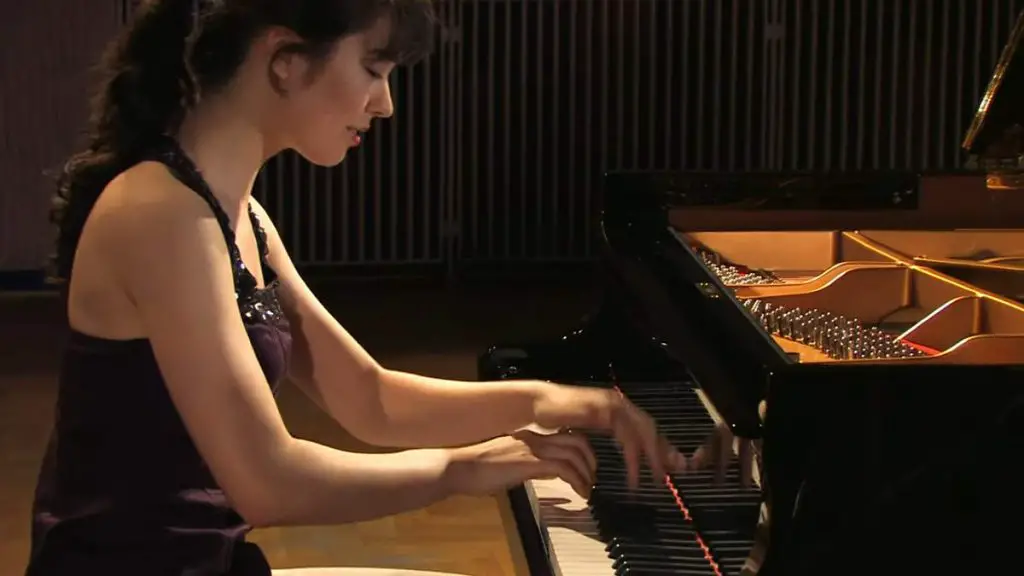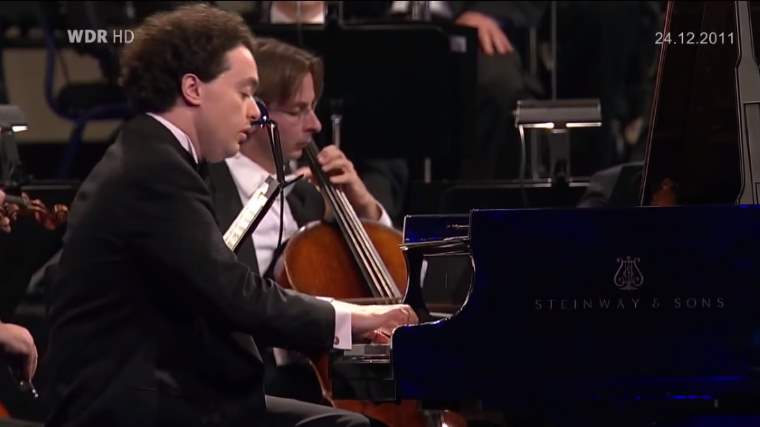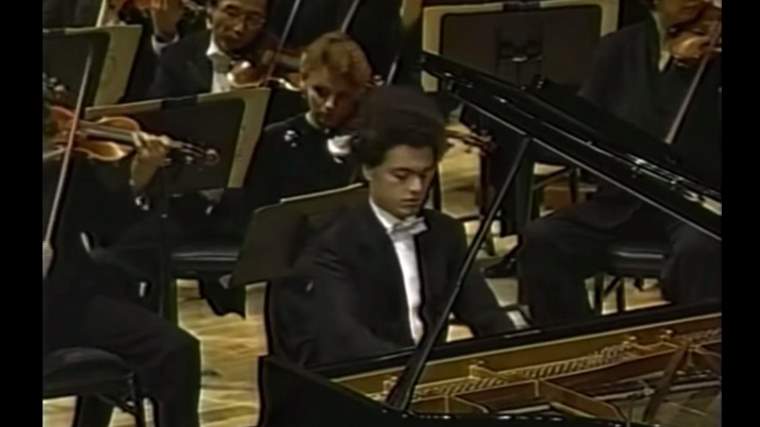Evgeny Kissin plays Franz Liszt’s La Campanella (Italian for “The little bell”). It is the nickname given to the third of Franz Liszt’s six Grandes études de Paganini, S. 141, which were published in 1851. Recorded at the Royal Albert Hall, London, August 1997.
Franz Liszt’s La Campanella
This piece is a revision of an earlier version from 1838, the Études d’exécution transcendente d’après Paganini, S. 140. Its melody comes from the final movement of Niccolò Paganini’s Violin Concerto No. 2 in B minor, where the tune was reinforced by a little handbell.
This “little bell” effect is illustrated by Liszt using the large intervals of sixteenth notes in the right hand. Liszt wrote this piece with a strong emphasis on the piano being a percussive instrument in an orchestra. “La Campanella” is widely regarded as one of the most difficult pieces ever written for the piano.
The étude is played at a brisk allegretto tempo and features right-hand jumps between intervals larger than one octave, sometimes even stretching for two whole octaves within the time of a sixteenth note.
As a whole, La Campanella can be practiced to increase dexterity and accuracy at large jumps on the piano, along with agility of the weaker fingers of the hand. The largest intervals reached by the right hand are fifteenths (two octaves) and sixteenths (two octaves and a second).
Sixteenth notes are played between the two notes, and the same note is played two octaves or two octaves and a second higher with no rest. Little time is provided for the pianist to move the hand, thus forcing the pianist to avoid tension within the muscles. Fifteenth intervals are quite common at the beginning of the étude, while the sixteenth intervals appear twice, at the thirtieth and thirty-second measures.
However, the left-hand studies about four extremely large intervals, larger than those in the right hand. For example, in bar 101, the left hand makes a sixteenth-note jump of just a half-step below three octaves. The étude also involves other technical difficulties, e.g. trills with the fourth and fifth fingers, and fast chromatic scales.
Sources
- La campanella on Wikipedia



